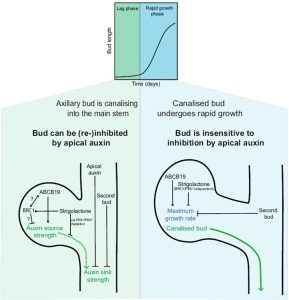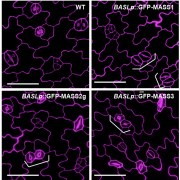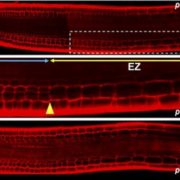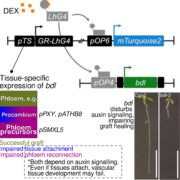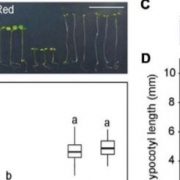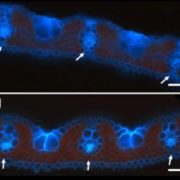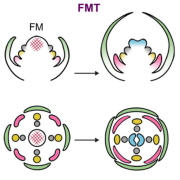Lag, then leg it! An updated two-phase model for axillary bud activation and outgrowth in Arabidopsis
The mechanisms of apical dominance and bud outgrowth have puzzled generations of plant scientists, and over a century various hypotheses have been scrutinized. Two main hubs of regulation – auxin canalization (movement of auxin from a bud into the main stem) and the branching transcription factors BRANCHED 1/2 (BRC1/2) – act in parallel and are influenced by factors such as strigolactones, auxin-loading transporter ABCB19, and the activity of neighbouring buds. Here, Nahas et al. used one- and two-node Arabidopsis thaliana Col-0 inflorescence stem segments to examine bud activation and outgrowth and the contribution of external factors to the dynamics of branching. Within both intact and decapitated shoots, two populations of buds with different maximum growth rates (MGR) were found. The authors introduce a new two-phase developmental model from the data, comprising an activation phase (lag) followed by rapid growth. Buds in both intact and decapitated shoots have equivalent lag phase duration and MGRs. Apical application of auxin extends the lag phase for buds of decapitated shoots for up to 72 h; afterwards, buds become insensitive to it. When basally applied to decapitated shoots, a strigolactone analogue prolongs the lag phase and lowers MGRs. Neighbouring buds compete for access to the main stem auxin flux (canalization), prolonging the lag phase for both buds and lowering the MGR of the topmost bud. The two phases discussed herein are compatible with previously proposed models and seem to be genetically and physiologically dissociable. Upon decapitation, bud activation and its establishment as an auxin source, which is inhibited by strigolactones and BRC1/2, is helped by ABCB19. This leads to canalizing auxin transport to the stem, which is now an auxin sink. Once activated, the bud’s rapid outgrowth is unlikely to be reverted, but its growth rate is hampered by competing buds and strigolactone signaling. (Summary by Johnatan Vilasboa @vilasjohn) New Phytol. 10.1111/nph.19664


